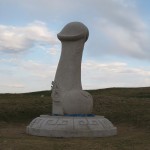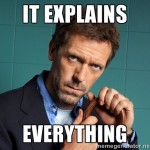Neo-Paganism has multiple centers, including Earth, Deity, and Self. This is the second in an 8-part series that explores Neo-Paganism as a Self-Centric “mystery religion”. This essay was originally published at Neo-Paganism.org.
“We will meet where the forest is deepest,
where the night is blank and there are no stars,
for I am your annihilation come to make peace.”— Geoff Bartley, “Language of Stones”
Many Neo-Pagans believe in reincarnation. Others do not. Whatever their views on the survival of the soul, most Neo-Pagans share a positive view of death.
In one version of the Neo-Pagan mythos, life and death are joined in a sacred marriage. The Goddess is both creator and destroyer. The Earth is both womb and tomb. This paradoxical life-death function promises resurrection in recurrence, and eternal return through annihilation. This is manifest in the seasonal turn of the year, in which the sacrifice of the old year makes the new year possible. In this view, every sacrifice promises new life. Nothing dies in vain. No virtue or energy is lost. There is only transfiguration and transformation. The cyclical movement of nature thereby transforms apparent defeat into transcendence.
Neo-Paganism can thus sanctify our ultimate annihilation, by holding that death is no less sacred than life. Indeed, death possesses a holiness which transcends the individual ego’s will toward life. Neo-Paganism can cultivate a transformation of our consciousness to an acceptance of our role in the eternal cycle of birth, life, and death. It can encourage us to fearlessly accept the ruthless immolation which somewhere awaits all of us. This requires abandoning the egocentric perspective of human fate and coming to terms with the unalterable truth of the cyclic harmony of the cosmos. Time and death are only evil in the limited perspective of the ego. This perspective deprives death of its individual reference and view death as a moment in the experience of the cosmos.
In Working With Oneness (2002), Llewellyn Vaughan-Lee explains:
“If life does not change, it dies, and yet paradoxically we are so frightened of death that we try to hold back the flow of life. Without knowing it, we are caught in a masculine idealized image, a longing for perfection that denies the feminine with its understanding of darkness, decay, and destruction. Without darkness there can be no birth; nothing creative can take place. Without destruction there can be no cycle of life, only a sterile environment in which nothing grows. If we do not accept the darkness, life will lose whatever meaning it has left. If we do not allow ourself to live in the darkness, the doors of revelation will remain closed.
















